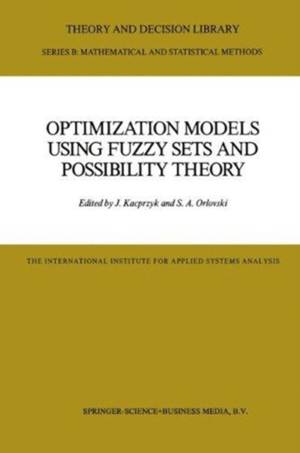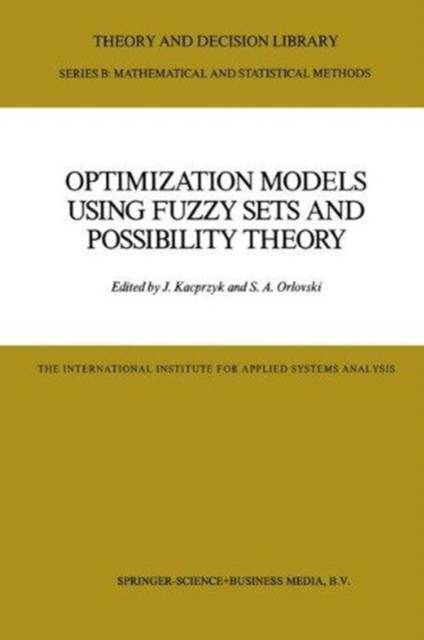
Bedankt voor het vertrouwen het afgelopen jaar! Om jou te bedanken bieden we GRATIS verzending (in België) aan op alles gedurende de hele maand januari.
- Afhalen na 1 uur in een winkel met voorraad
- In januari gratis thuislevering in België
- Ruim aanbod met 7 miljoen producten
Bedankt voor het vertrouwen het afgelopen jaar! Om jou te bedanken bieden we GRATIS verzending (in België) aan op alles gedurende de hele maand januari.
- Afhalen na 1 uur in een winkel met voorraad
- In januari gratis thuislevering in België
- Ruim aanbod met 7 miljoen producten
Zoeken
Optimization Models Using Fuzzy Sets and Possibility Theory
€ 95,04
+ 190 punten
Omschrijving
Optimization is of central concern to a number of discip- lines. Operations Research and Decision Theory are often consi- dered to be identical with optimizationo But also in other areas such as engineering design, regional policy, logistics and many others, the search for optimal solutions is one of the prime goals. The methods and models which have been used over the last decades in these areas have primarily been "hard" or "crisp", i. e. the solutions were considered to be either fea- sible or unfeasible, either above a certain aspiration level or below. This dichotomous structure of methods very often forced the modeller to approximate real problem situations of the more-or-less type by yes-or-no-type models, the solutions of which might turn out not to be the solutions to the real prob- lems. This is particularly true if the problem under considera- tion includes vaguely defined relationships, human evaluations, uncertainty due to inconsistent or incomplete evidence, if na- tural language has to be modelled or if state variables can only be described approximately. Until recently, everything which was not known with cer- tainty, i. e. which was not known to be either true or false or which was not known to either happen with certainty or to be impossible to occur, was modelled by means of probabilitieso This holds in particular for uncertainties concerning the oc- currence of events.
Specificaties
Betrokkenen
- Uitgeverij:
Inhoud
- Aantal bladzijden:
- 462
- Taal:
- Engels
- Reeks:
- Reeksnummer:
- nr. 4
Eigenschappen
- Productcode (EAN):
- 9789027724922
- Verschijningsdatum:
- 30/06/1987
- Uitvoering:
- Hardcover
- Formaat:
- Genaaid
- Afmetingen:
- 152 mm x 223 mm
- Gewicht:
- 817 g

Alleen bij Standaard Boekhandel
+ 190 punten op je klantenkaart van Standaard Boekhandel
Beoordelingen
We publiceren alleen reviews die voldoen aan de voorwaarden voor reviews. Bekijk onze voorwaarden voor reviews.








